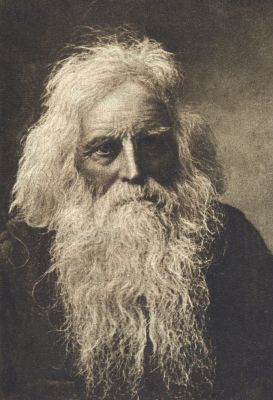
Title
In the BinderyArtist
Johnston, Frances Benjamin (American, 1864-1952)Publication
The Roycroft Books; A Catalogue and Some Comment Concerning the Shop and Workers at East Aurora, NYDate
1900Process
Photogravure (sheet-fed, dust grain)Image Size
14.2 x 10.6 cmSheet Size
19.5 x 15 cm
Born in 1856, Elbert Hubbard became wealthy as a result of his work in a Buffalo, NY soap and mail order company. He decided to leave business when he was 36 years old. Calling himself both an anarchist and a socialist, Hubbard worked to realize social, economic, political and spiritual freedom while rejecting industrialism through his writings. When he struggled to find commercial publishers interested in his ideas, he bought a small press in East Aurora, NY, and in 1895 began producing a magazine titled The Philistine: A Periodical of Protest. The Philistine caught the attention of the printing and design communities, and quickly became a success. Hubbard invited talented printers, typesetters, book binders, graphic designers, and more to East Aurora to work, teach classes, and live in a community of like-minded individuals. Over 500 artists, furniture makers, and other craft workers soon joined, comprising the Roycroft community. Members were known as Roycrofters. A faction of the Arts and Crafts movement in the United States, they had a significant impact on early 20th century American architecture and design. Living together in East Aurora, Roycrofters were drawn to Hubbard’s charisma, and bound by an allegiance to the social and artistic ideals he advanced. The community thrived in upstate New York until Hubbard’s death on the Lusitania in 1915.
Roycroft publications, like The Roycroft Books: A Catalog, were printed on handmade papers, and were produced on hand-operated presses. Graphic designers incorporated colored design elements in the Arts and Crafts style, and took advantage of the flexibility offered by hand-set type in structuring the layout of the text and graphic elements on each page.
The Roycrofters did not install their own photogravure shop until 1907 before which the plates were made for them. Francis Benjamin Johnson, in her archive at the Library of Congress, has a group of cyanotypes from the same photographs in this ‘catalog’. A fellow ‘Roycrofter’, She may have been the photographer for the others as well.
Reproduced / Exhibited
MET accession Number: 2014.640.3(7)
